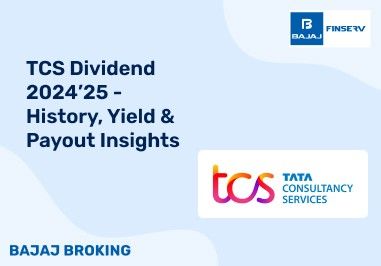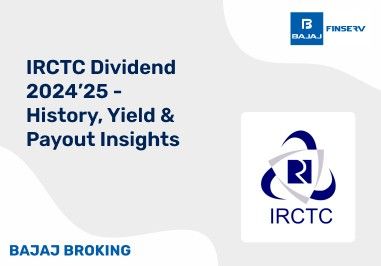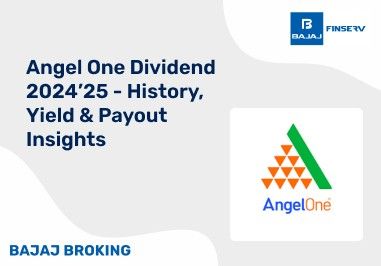Price/Earnings-to-Growth or the PEG ratio is a useful financial metric that can help us analyse whether a stock is fairly valued, overvalued, or undervalued. The ratio assesses a stock’s ability to appreciate based on its current price, earnings per share, and expected earnings growth.
The PEG ratio has been used by experts, analysts, and all sorts of market participants for decades now. It was popularised by Peter Lynch, an extremely famous American investor who managed the Magellan Fund at Fidelity Investments. Read this blog, as it takes a deep dive into the PEG ratio’s meaning, how to calculate it, and how it is a better indicator than the P/E ratio.
What is the meaning of PEG Ratio?
The PEG ratio is a popular financial indicator that allows us to examine a stock’s valuation. It divides a company’s price-to-earnings (P/E) ratio with its expected earnings growth. Hence, it is a more holistic metric for stock valuation than the P/E ratio, which is based on only two numbers: the price per share and the earnings per share.
Suppose a company’s P/E ratio is high, does it mean that its stock is necessarily more expensive than that of those companies with a lower P/E ratio? You may feel like saying “yes” in response. However, what if investors expect this company to grow at a significant rate and hence are willing to pay a high price for its stock? This shows that the P/E ratio does not consider the expected growth in a company. Hence, the PEG ratio was invented. Having learnt the meaning of the PEG ratio, let us discuss how to calculate it.
How to Calculate the PEG Ratio?
We need to use the following formula to calculate the PEG ratio of a company:
PEG Ratio = [Price Per Share/Earnings Per Share]/Expected EPS Growth Rate
From the formula, it is clear that we need three variables to calculate the PEG ratio of a company. The price per share of a company is easily available from the stock market. Similarly, earnings per share is also available from the latest quarterly or annual financial statements. Now, to know the expected growth rate in earnings per share (EPS) of a company, you can plug in your own expectations if you understand its business model well. Alternatively, you can check the expectations of analysts who track the company well.
Let us take an example to understand the concept better. Suppose a company has a price per share of ₹100 and its EPS is ₹10. Analysts expect its earnings to grow at the rate of 5% in the next 1-3 years. Hence, its PEG ratio is:
[100/10]/5 = 2
How to Interpret the PEG Ratio?
Before we understand how to interpret the PEG ratio, we need to get a grip over the concept of the PE ratio. A company’s PE ratio tells us how much an investor wants to pay for each rupee earned by it.
Suppose a company called “X” has a price per share of ₹ 200 and its earnings per share (EPS) is ₹ 40, its PE ratio would be 5. In other words, for every rupee of its earnings, an investor is willing to pay ₹ 5. Let us say its nearest competitor is a company called “Y,” which has a PE ratio of 7, which means an investor is willing to pay ₹ 7 for every rupee earned by Y.
Based on this analysis, it may seem that Y is more expensive than X. However, we must keep in mind that the PE ratio does not consider a company’s expected future growth. Suppose Y’s EPS is expected to grow at 10%, while that of X is expected to grow at only 5%.
Hence, Y’s PEG ratio is 0.7 (7/10), while X’s PEG ratio is 1 (5/5). So, in terms of the PEG ratio, Y is cheaper than X even though Y has a higher PE ratio than X. By factoring in expected earnings growth, the PEG ratio provides a more nuanced perspective about the valuation of a stock than the PE ratio.
What is a good PEG value?
Generally speaking, a PEG ratio of less than 1 can be considered a good value. Suppose a company has a PE ratio of 5, but its expected EPS growth is 8%. Hence, its PEG ratio would be 0.625 (5/8). It means that the stock market is undervaluing the company because its expected EPS growth rate is higher than its PE ratio.
On the other hand, if a company’s PEG ratio is more than 1, it means that the market is overvaluing it in all likelihood. Suppose a company’s PE ratio is 8, but its expected EPS growth is 5%, then its PEG ratio would be 1.6 (8/5). In other words, this company’s expected EPS growth is lower than its PE ratio. Hence, it does not make sense to buy it. Instead, it can be a good idea to sell its stock.
Meanwhile, if a company’s PEG ratio is 1, which means its PE ratio is equal to its expected earnings growth, it is deemed to be fairly valued by the market.
When should the PEG ratio be used?
The PEG ratio can be used in various situations. For example, it can be used to compare the valuations of firms that compete in the same industry. To illustrate the point further, we can use the PEG ratio to compare the valuation of one consumer goods company with that of another.
Moreover, it can be used to examine the valuation of high-growth firms. For example, young tech startups often have a very high PE ratio, which could be due to their low earnings or high stock price. Hence, the PE ratio for such companies could be misleading. So, by considering their growth potential and taking the PEG ratio into account, we can analyse them better.
Last but not least, the PEG ratio is an effective tool to identify undervalued and overvalued stocks. A PEG ratio of 1 indicates that the market values a stock fairly. However, a PEG ratio of more than 1 shows that the market is overvaluing a stock. Conversely, a PEG ratio of less than 1 shows that the market is undervaluing a company.
Advantages of the PEG ratio
Simple to understand and calculate: The PEG ratio is extremely simple to understand and calculate. You only need to know basic maths to understand it.
Offers a more nuanced perspective than the PE ratio: Although the PE ratio is more widely used, the PEG ratio offers a more nuanced perspective than the PE ratio. This is because it considers the expected growth in a company’s earnings along with its PE ratio.
Helps compare similar stocks: The PEG ratio is a useful financial indicator to compare the valuations of similar stocks, which helps find undervalued and overvalued stocks.
Quick to use: Unlike a lot of other financial indicators, the PEG ratio is quick to use. It does not require lengthy calculations. Besides, it helps analysts and other observers compare stocks quickly, without requiring them to spend hours on their spreadsheets.
Helps make long-term decisions: While calculating the PEG ratio, you can consider the expected earnings growth of a company over a long period, which will help you decide whether it is a good candidate for investment from a long-term viewpoint or not.
Disadvantages of the PEG ratio
Degree of subjectivity involved: We need to estimate the future earnings growth of a company to calculate its PEG ratio, which involves a degree of subjectivity. Often, analysts do not agree on the expected EPS growth of a company, which makes it a bit difficult to use the PEG ratio.
Considers only a few factors: The PEG ratio considers only price per share, earnings per share, and expected earnings growth to value a company. It does not consider many other factors, like management quality, market positioning, etc. Hence, over-relying on this indicator could be risky.
Does not work if price or earnings fluctuate a lot: If a company’s price or earnings fluctuate a lot, its PEG ratio may not be a reliable indicator due to constantly fluctuating values, making it difficult for observers to take a call on the company.
PEG Ratio vs P/E Ratio
The main differences between the P/E ratio and the PEG ratio are explained in the table below:
Criteria
| P/E Ratio
| PEG Ratio
|
What the ratio does
| This ratio compares a company’s price per share with its earnings per share.
| This ratio compares a stock’s P/E ratio with its expected growth in earnings.
|
How to calculate it?
| This ratio is calculated by dividing a company’s price per share by its earnings per share.
| This ratio is calculated by dividing a company’s P/E ratio with its expected earnings growth.
|
Interpretation
| Let us take an example to understand it. Suppose a company’s PE ratio is 5, it means investors are willing to pay ₹ 5 for each rupee it earns.
| If a company’s PEG ratio is 1, it means its P/E ratio equals its expected earnings growth. A PEG ratio of 1 shows that a stock is fairly valued. If a PEG ratio is less than 1, it means a stock is possibly undervalued. Conversely, if a stock has a PEG ratio higher than 1, it could be overvalued.
|
Conclusion
The PEG ratio can be a highly useful indicator whether you have just started trading by open a demat account or are a seasoned trader. By considering a company’s expected earnings growth along with its PE ratio, it provides a nuanced view about its valuation. However, you should not use the PEG ratio alone to value a stock because over-reliance on any indicator is not a good idea. Hence, you must use the PEG ratio with other indicators to assess a stock’s valuation.













